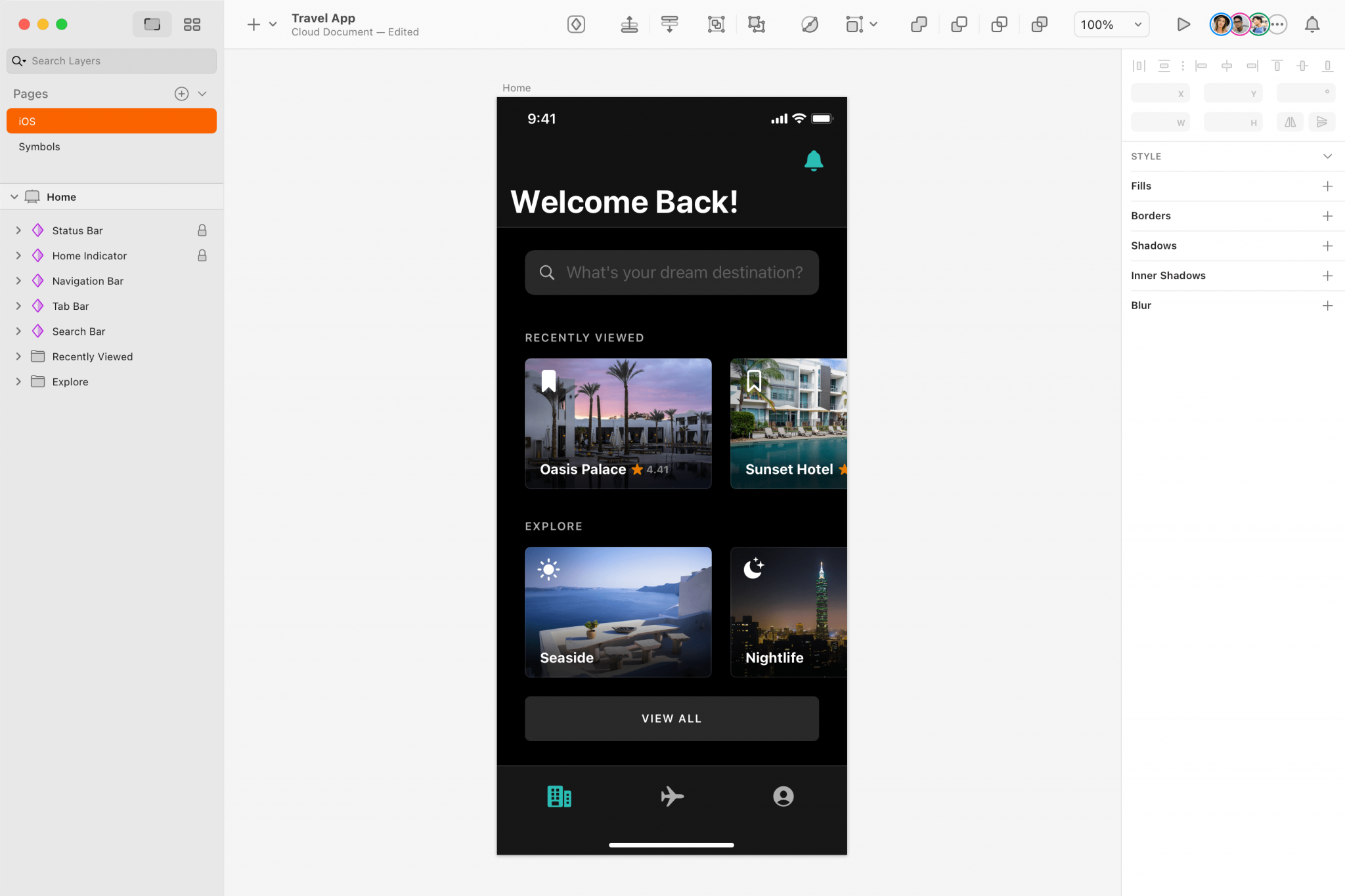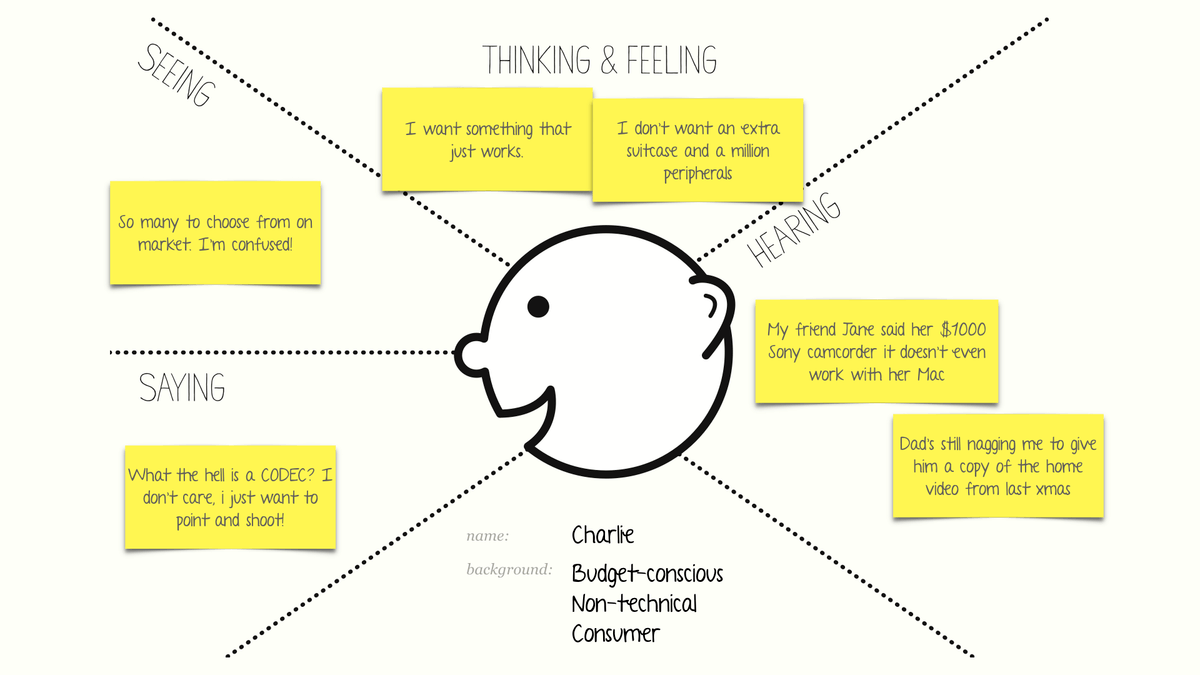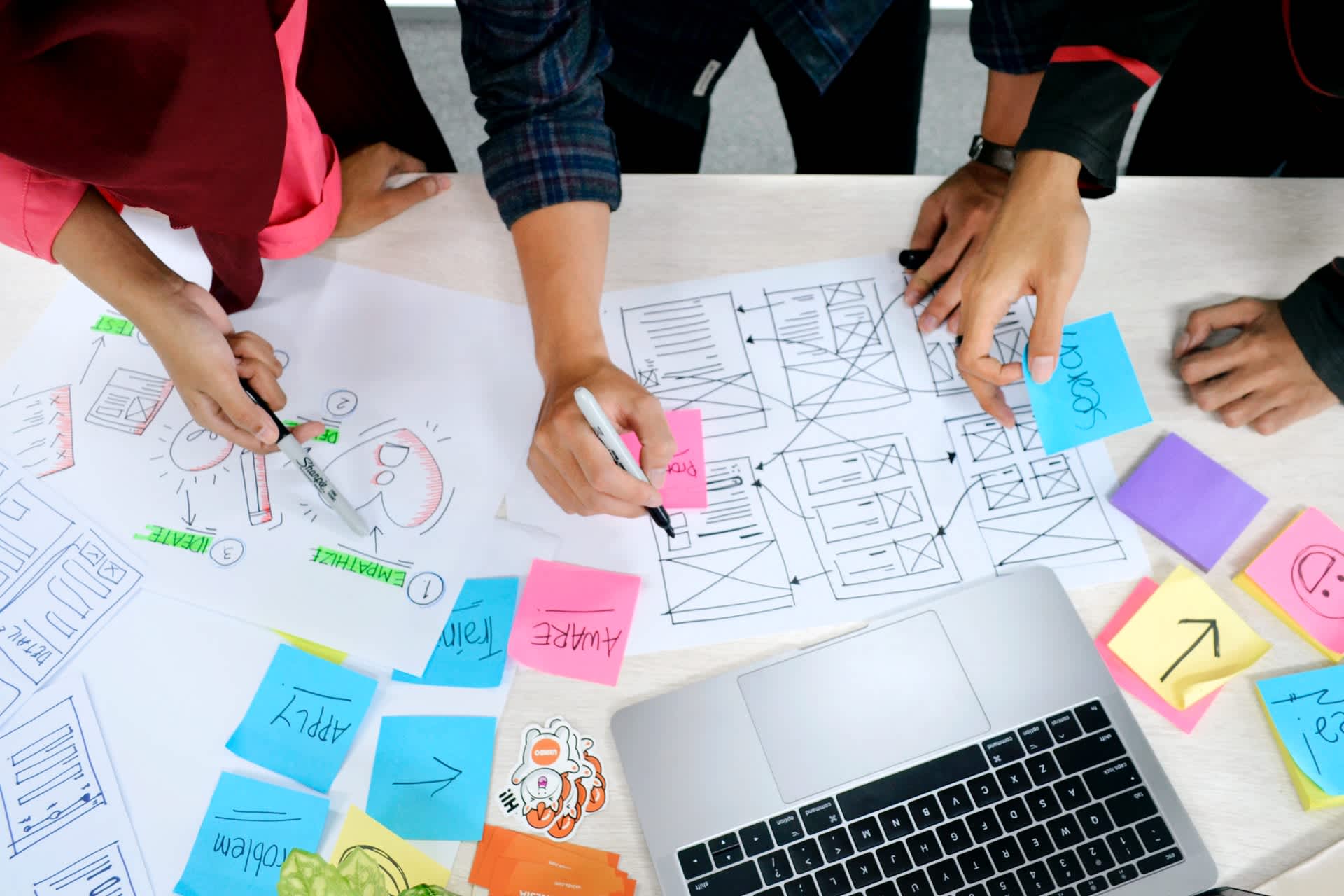The software industry is full of acronyms, ambiguous terms, and evolving roles. Perhaps nowhere is this better illustrated than the ideas of UI and UX design. While user interface and user experience sound very similar, there are some essential differences between these two terms and their roles within a software development team.
Let's look at the difference between UX and UI design and how both roles work together to build usable products.
What is User Interface (UI) Design?
The user interface, or UI, consists of all the elements that enable users to interact with a product. For example, text, buttons, colors, and layouts are all user interface elements. UI designers are primarily concerned with designing, organizing, and arranging these elements on a page to achieve specific outcomes, such as guiding a user through a workflow.

Sketch is a commonly used tool for UI designers. Source: Sketch
UI designers may also have a background in art or design, including typography, color schemes, animation, branding, and other areas. Or, they may have some HTML/CSS experience, enabling them to incorporate design elements into basic code that front-end developers can use as a basis for the actual production application.
Most UI designers use tools like Figma or Sketch to build user interfaces. These UI elements are then sent over to front-end developers that convert the designs into code. For example, both Figma and Sketch enable UI designers to export image assets in various formats and even generate vector icons that developers can drop into designs.
In some cases, a dedicated visual designer will be responsible for creating the actual artwork based on strategic design principles. For example, these individuals might handle logo design, iconography, and creating marketing materials appearing in a user interface. In other cases, these responsibilities may fall to UI designers.
What is User Experience (UX) Design?
The user experience is what the user takes away from interacting with a product. For example, a user's journey toward solving a problem or accomplishing a task is the user experience. UX designers focus on helping users solve problems with minimal friction and help teams avoid building the wrong solutions to a problem.

Empathy maps are a standard tool for UX designers. Source: Common Lounge
UX designers typically have a background in user research and design thinking. For example, they may have experience running A/B tests, user interviews, email surveys, or using other techniques. In addition, they may have expertise using low-fidelity design tools and excel at communicating with product managers or owners.
UX designers typically use Customer Personas, Empathy Maps, and Journey Maps to discover a user's goals and design the optimal ways to achieve them. These tools form the high-level vision before UI designers add fidelity. For example, empathy maps help UX designers understand how a user feels throughout a workflow to eliminate frustrations.
How UI & UX Work Together
UI designers can create beautiful designs, but they would be confusing without a good UX design. On the other hand, UX designers could create the perfect workflow, but it could fall flat without a good UI design. Together, UI and UX designers understand the customer's needs and build beautiful and functional products.
Some of the key responsibilities for each team include:UI Design
In some cases, a single role fulfills UI and UX responsibilities. These UI/UX roles are typically responsible for everything from user research to front-end deliverables. However, a common criticism is that fulfilling both rules is challenging and can reduce the overall quality. Separate teams tend to be a far better option, especially in larger organizations.
How They Fit into Development
Most Agile development teams have UX and UI design teams that work alongside front-end and back-end developers. UX teams are typically involved in the planning stages of a sprint, whereas UI designers usually join the process during the earlier stages of a sprint. Both groups tend to also work closely with front-end developers to bring the vision to life.
Here's how a typical Agile workflow might function:
A product manager works with a UX design team to better understand a user's goals. They may use customer personas, empathy maps, and journey maps in the process.
The UX team's user workflows become user stories or job stories. UI designers pull these stories into development with each sprint and begin to design high-fidelity UI elements.
The UI design team's UI elements are converted into code by front-end developers and become part of the application.
The UX team collects feedback from users to either improve existing features or begin work on new features.
UI and UX designers both work with Agile and communication tools, such as Jira or Slack. In addition, both roles require collaboration with developers, product managers, and quality assurance engineers to iterate designs and workflows based on the market, user feedback, and technical constraints—all critical components of Agile.
Outsourcing UI or UX Design
Many businesses outsource software development to focus on their core competencies, while other companies add outside expertise where needed. When outsourcing UI or UX roles, you should consider the differences between them when selecting a partner. The best partner for UI support may look very different than a UX partner.
For example, Dribbble and other design platforms make it easy to identify UI design talent. These designers may have a firm grasp on design theory and produce intuitive and easy-to-use interfaces. However, these same individuals may not have UX-related skills, such as running user interviews or developing A/B tests.
If you're looking to outsource UX design, the best firms position themselves as partners. After all, UX design is a much more intimate discipline that involves working with stakeholders in the early stages of development to build the right product. In particular, these firms should have expertise in customer testing and prototyping/MVPs.
The Bottom Line
UI and UX teams both play important roles within an Agile software development firm. While UX designers are focused on the high-level flow, UI designers implement the granular details before handing off design elements to front-end developers to put into the final release.
If you need to help with UX or UI design, contact us today to schedule a free consultation!

Greg Cargopoulos
Marketing Lead

